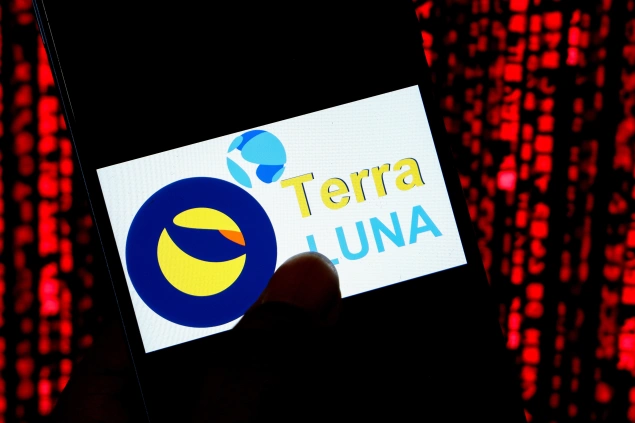A few weeks ago, LUNA was the largest stablecoin in the world. Now it’s close to worthless. Here is a guide to how billions were erased.
What is Terra LUNA?
Programmer and entrepreneur Do Kwon founded Terraform Labs in Seoul, South Korea in 2018, and launched its first cryptocurrency token in 2019. The Terra platform uses a proof-of-stake blockchain, and boasts a much faster cryptocurrency settlement than Bitcoin. As of late March, the LUNA stablecoin, which uses the Terra platform, was the largest decentralized finance token by market capitalization, with a theoretical market capitalization of about $34 billion.
How was Terra/LUNA supposed to work?
Terra issues several stablecoins that are pegged to the value of different world currencies. One of the most popular is Terra USD (UST), which is pegged to the US dollar. Unlike Bitcoin, which has a fixed number of coins that can ever exist, the supply of UST is determined by the demand for it, which theoretically enforces the 1:1 relationship the coin has to the US dollar. The relationship between Terra and LUNA involves minting and burning coins in order to keep the value at equilibrium. Similarly, the system was designed to maintain 1:1 dollar value through market arbitrage; if the market value of LUNA slipped to 99 cents or less, enough buyers were supposed to enter the market to raise the value, and if the value went to $1.01 or higher, enough holders would sell to lower its value. In addition, in March, Terra took the unusual step of buying up to $10 billion in Bitcoin to shore up the value of its coins.
What went wrong with UST?
On Saturday May 7, the trading price of UST went to about 98 cents and stayed there longer than arbitrage theory would have suggested. This is roughly the equivalent of a money market fund “breaking the buck.” Large quantities (worth billions of dollars) of UST were taken off of various protocols, reflecting either a collective mistrust in the value of UST or, as some have suggested, a coordinated attack to profit from a huge dip in the coin’s value. UST has plummeted; as of midday May 13 it is trading at about 15 cents. LUNA suffered a worse fate; since May 12 it has traded below a penny and Terraform Labs was forced to restart its blockchain.
If I don’t own these coins, do I need to care?
Quite possibly. For the last year, regulators around the world have been warning that the rapid and largely unregulated rise of stablecoins represented a potential threat to broader financial stability. In June of last year, Boston Federal Reserve President Eric Rosengren gave a speech in which he included a slide showing the dramatic increase in stablecoin value compared to prime money market funds, which for decades have helped maintain dollar stability:
Stablecoin concerns have only grown since. In a Senate Banking Committee hearing on May 10, Treasury Secretary Janet Yellen said: “A stablecoin known as TerraUSD experienced a run and declined in value. “I think that simply illustrates that this is a rapidly growing product and that there are risks to financial stability and we need a framework that’s appropriate.”
What will happen next?
It is hard to see how the Terra/LUNA system can survive this disaster. Angry coin owners have taken to social media; South Korean media reports that an unidentified woman broke into the apartment building where Do Kwon lives. There will be government investigations and lawsuits, but it is unlikely that investors will be able to recover their losses unless the coins stage a miraculous comeback.

